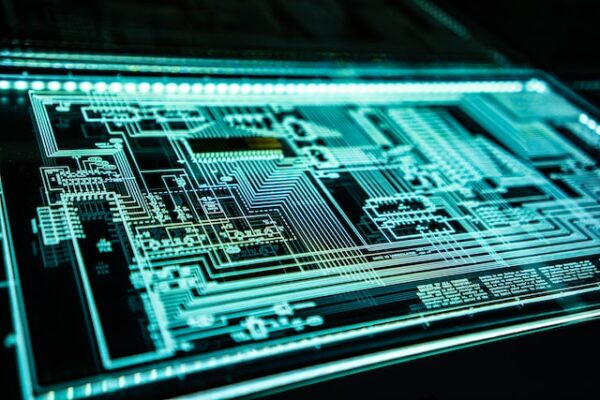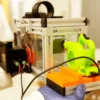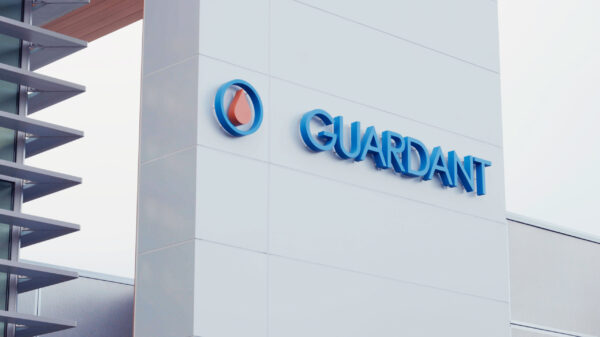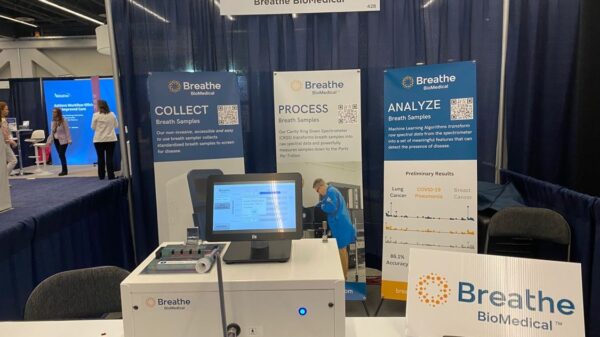Star Trek produced the idea for the first ever cellular phone. Captain Kirk would whip it out midscene and communicate from the bridge of the Starship Enterprise down to the surface of some planet. While the modern variant doesn’t exactly have the range or the power to communicate with starships like the fictional high tech communicator, the promise is there. Long distance communications are eminently possible, and in fact, everyday occurrences. This would have appeared like magic to previous generations.
“The future is already here. It’s just not evenly distributed yet,” said William Gibson, one of the latest generation’s prophets of science and technology.
High tech solutions, properly deployed, actually stretch the idea of what we think is possible.
Here are five companies hard at work producing high tech solutions to modern problems.
Vuzix Corporation brings telepresence dreams to reality
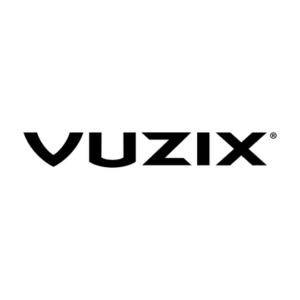
Vuzix Corporation (NASDAQ:VUZI) received and shipped against an volume purchase order from Hodei Technology earlier this week. Hodei is based in Indiana and develops and retails web platforms primarily in support of its newly launched remote support platform, Klabra.
The partnership has Vuzix providing customer access to Klabra, itself a proprietary web platform will work with Vuzix M400 and M4000 and Blade 2 smart glasses in a WebRTC solution. The use of which is for companies to provide remote customer support, coaching, troubleshooting, work oversight or training. Now Hodei customers can go to one place to get their smart glasses and have the Remote Support App pre-loaded.
“We see our relationship with Vuzix as another important piece in our mission to develop and deploy the best-in-class hardware with our Klabra solutions, which are tailored for the emerging “Connected Worker” Industry 5.0 environment. The team at Vuzix has been great in their partnership efforts with Hodei and we look forward to that continuing to strengthen and grow over time,” said Guy Mascaro, CEO and president of Hodei Technology.
Klabra makes it money through a subscription model with a strong user experience, easy deployment and open API infrastructure that’s friendly to integration and scaling. It offers flexibility to original equipment manufacturers, field service organizations, construction companies and healthcare systems.
Hodei Technology has assisted and augmented reality technologies since 2014. It’s continuing to innovate its programs and solutions to meet the connection, collaboration and creation needs of today’s worker. Klabra comes with a choice of smart glasses and the functionality to get the work done. Vuzix in contrast builds smart glasses and uses both mixed and augmented reality for a number of different industries.
“We are excited to be partnering with Hodei Technology and supporting its Klabra platform, a robust enterprise solution that is ideally suited to work with Vuzix smart glasses. We look forward to supporting their efforts to help their expanding list of customers improve productivity and gain competitive advantages within their respective industry verticals,” said Paul Travers, president and CEO of Vuzix.
Klabra’s interface gives multiple participants a first person point of view from the perspective of the person wearing the smart glasses. The Vuzix user logs into Klabra.com, scans a QR code with the glasses and joins the session live. Everyone from that point on can talk and share information and see everything the user sees while working hands-free.
Aviat Networks uses microwaves to communicate

Aviat Networks (NASDAQ:AVNW) released a vendor agnostic multi-band (MB-VA) solution that lets operators upgrade the capacity of an existing installed licensed mincrowave link up to 10 Gbits/s
Microwaves do a lot more than just cook your food. They carry information and can act as a suitable communications medium. They’re widely used for point-to-point communications because their small wavelength antennas direct them in narrow beams, which can be directly pointed at the receiving antenna.
Like a lot of technology, most transmitters and receivers are specific and proprietary. If you want to use microwaves to transmit, then both receiver and transmitter often need to be made by the same company. Aviat’s MB-VA give operators a chance to use microwaves from any vendor with cost effectiveness in mind, and with the demands put forward by advanced LTE and 5G.
“Many operators have extensive investments in legacy microwave backhaul networks that have limited capacity expansion capability. Now, using Aviat’s unique MB-VA solution, these operators can leverage their historical investment rather than employing expensive fiber replacements,” said Peter Smith, CEO of Aviat Networks.
Aviat’s deal is wireless transport solutions and works to provide dependable products, services and support. It’s sold over one million systems in 170 countries all over the world to communications service providers and private network operators. The list of customers includes state and local government, utility, federal government and defense organizations. MB-VA is the latest innovation for Aviat.
Aviat’s MB-VA provides:
- Patented Layer 1 Link Aggregation (L1LA) algorithm ensures maximum efficiency and highest possible throughput;
- Single- or dual-channel E-Band overlay enables extended distance Multi-Band links up to 20km; and
- Multi-Band link overlay adds up to two additional microwave channels plus one E-Band channel, all in one box.
Operators seeking an overlay solution to increase their network capacity can turn to Aviat’s proven supply chain for timely deliveries. Aviat’s MB-VA software ships in October and is available to order now.
Synopsys and Samsung collab bring microchip advancements

The microchip shortage problem isn’t going away anytime soon. But at least there are some companies out there trying to make due with what we can.
Let’s take Synopsys (NASDAQ:SNPS) for one. Synopsys has produced multiple successful test chip tapeouts on its digital and custom design tools and flows as part of a collaboration with Korean tech giant Samsung.
The purpose for this is to drive adoption of Samsung’s 3 nanometer (nm) gate all around (GAA) technology for designs in need of optimal power, performance and area. Microchips need to be more powerful, smaller and take up less resources. Customers using both get Samsung Foundry’s SF3 tech, which can provide 50 per cent reduced power, 30 per cent increased performance at 30 per cent smaller area than the previous process.
“Today’s demanding mobile, high-performance computing and AI applications require power and performance levels that stretch the limits of small geometries. Our longstanding collaboration with Synopsys on EDA design flow certifications provides mutual customers with substantial power, performance and area advantages,” said Sangyun Kim, corporate vice president of the Foundry Design Technology Team at Samsung Electronics.
Synopsys is a chip innovator looking to bring companies better options for developing electronic products and software applications. It’s an S&P 500 company with a history with electronic design automation and semiconductor intellectual property, and offers a portfolio of application security testing tools and services.
As our lives move steadily towards being 100 per cent mediated by computers, the threat posed by microchip shortage becomes almost existential.
At present, the auto sector is one of the principle culprits for the semiconductor shortage. Modern cars, computerized panels and security systems all need chips. Car makers stalled orders for new chips at the start of the pandemic, expecting a reduction in demand for new cars. They were wrong.
“Synopsys’ strategic collaboration with Samsung Foundry has enabled us to remain in lockstep through every generation of their process technology advancements. By providing leading EDA design flows certified on the most advanced Samsung 3nm technology, our mutual customers can maximize the capabilities of their advanced SoC designs and achieve a faster path to silicon success,” said Shankar Krishamoorthy, GM of the EDA Group at Synopsys.
The collaboration between Synopsys and Samsung Foundry is taking aim at that issue. Samsung Foundry streamlined its 3nm process costs and timeline based on design metrics. Now the foundry includes Synopsys DSO.ai™ in its flow, using the machine learning capabilities to help scale the choices in chip design and push process development.
Future Fintech and the future of financial technology

The technology surrounding currency, money and wealth is in a state of extreme flux right now. The way a citizen dealt with their financial life has changed in the past five years and it’s continuing to transform rapidly.
Towards that end, we have Future Fintech Group (NASDAQ:FTFT), which closed the acquisition of money transfer firm, Khyber Money Exchange.
Khyber Money Exchange is a money transfer company with a platform services polities all over the world. All that’s required is one of its agent locations or an online portal, mobile platform or a phonecall. It’s been around since 2009, has its home in the United Kingdom and has since spread to Germany and Italy.
“We are pleased with the completion of the acquisition of Khyber Exchange since it further extends our fintech footprint and reach. Further, we believe that the acquisition will play an important role in the strategic transformation of the Company and that it lays a foundation for the internationalization of our business and income. Our objective is to become a diversified fintech enterprise that leverages current opportunities and integrates them into a comprehensive business platform,” said Shanchun Huang, chief executive officer of Future Fintech.
Future Fintech Group is a blockchain application tech developer and fintech service from Florida, and that’s really the difference here. The company includes a blockchain based online shopping mall platform called Chain Cloud Mall. It also includes financial services for supply chains, asset management, and cryptocurrency market data services. Beyond that, the company has been working on blockchain based e-commerce technology, cryptocurrency mining, money transfer service and financial services technology businesses.
Future Fintech UK, the company’s UK-based subsidiary, originally signed the definitive agreement for the acquisition in early September. The deal was to buy 100 per cent stake in Khyber Exchange from the seller Rahim Shah for €685,000.
The global fintech market was roughly USD$$110.57 billion in 2020, and is anticipated to reach $698.48 billion by 2030, at a compound annual growth rate of 20.3 per cent from 2021 to 2030, according to allied market research.
RDARs and high tech defense

A discussion of high technology wouldn’t be complete without getting into global defense. In this case, we have RDARS (CSE:RDRS). RDARS opened its first unmanned aerial system (UAS) Command and Control Center in Miami, Florida.
RDARS deal is autonomous systems using artificial intelligence to protect commercial, industrial and residential properties. Basically these are non-weaponized drones. These drones offer real time response, situational awareness, verification, evidence recording, intervention, data capture and analysis.
“We are really excited about the evolution of our systems, the industry, the technology, and the regulatory oversight that is occurring to allow for the realization of visionary systems to make the country a safer place and emergency response times faster and better. We are forging ahead and are proud of our vision, system designs, and state of the art technology leading the way with breakthrough autonomous systems,” said Charles Zwebner, CEO of the company.
Eagle Eye
The centre allows drone operators to manage its drones using the Eagle Watch technology system. These are the Eagle Eye Drone and Eagle Rover UGV (or unmanned ground vehicle). Operators use these devices to improve security and greatly enhance situational awareness. Additionally, it doesn’t hurt that operators also have security alarm response management training.
This tech falls under the Federal Aviation Administration (FAA) specification for beyond visual line of sight environment. The company will fill out the necessary waivers and seek certification with all the appropriate regulatory bodies over the next nine months.
Recent natural disasters like Hurricane Ian have shown the potential for services like Eagle Watch. First responders could use the high tech solution to get live video imaging from damaged and dangerous places. The platform also includes its own reserve power, which makes it an optional base for first responders in emergency situations. The company believes this is the way of the future. It will deploy more visual line of sight UAS systems to complete secure integration into National Airspace.
Read more: The Mugglehead technology roundup: amazing agricultural innovations edition
Read more: The Mugglehead technology roundup: communication edition

